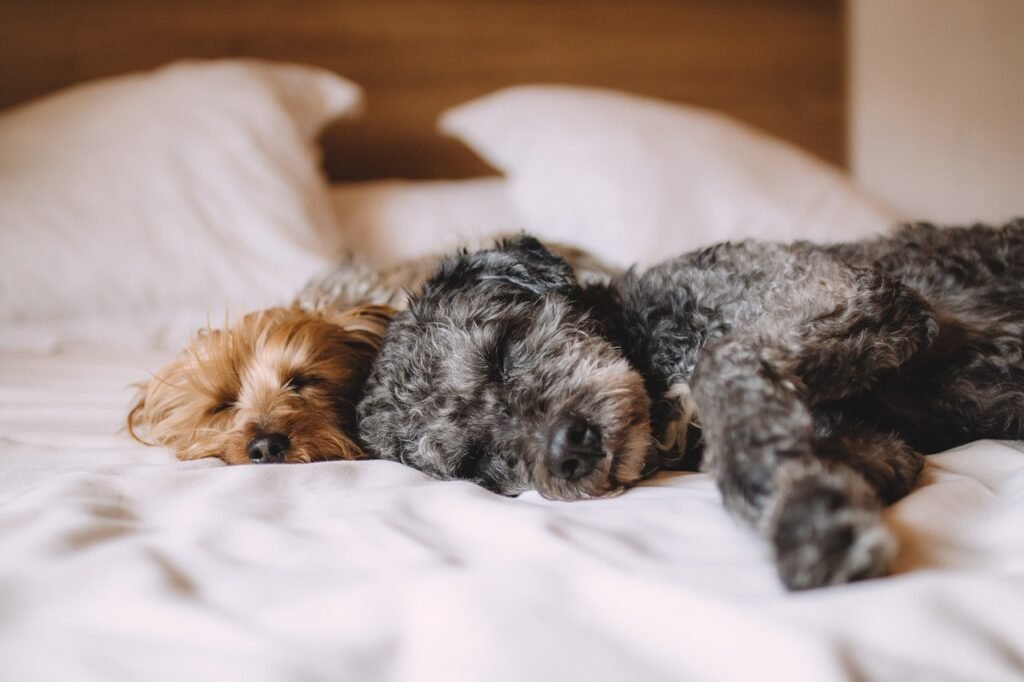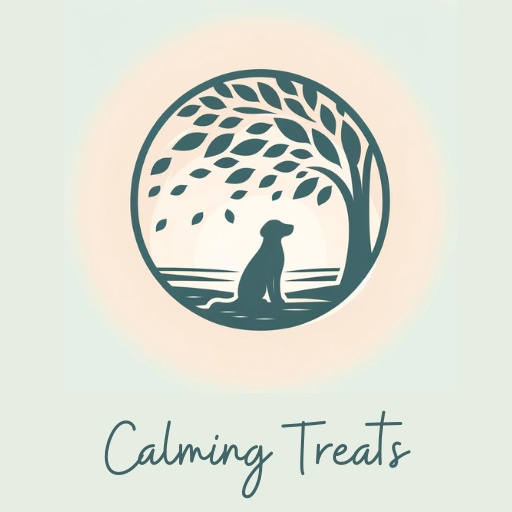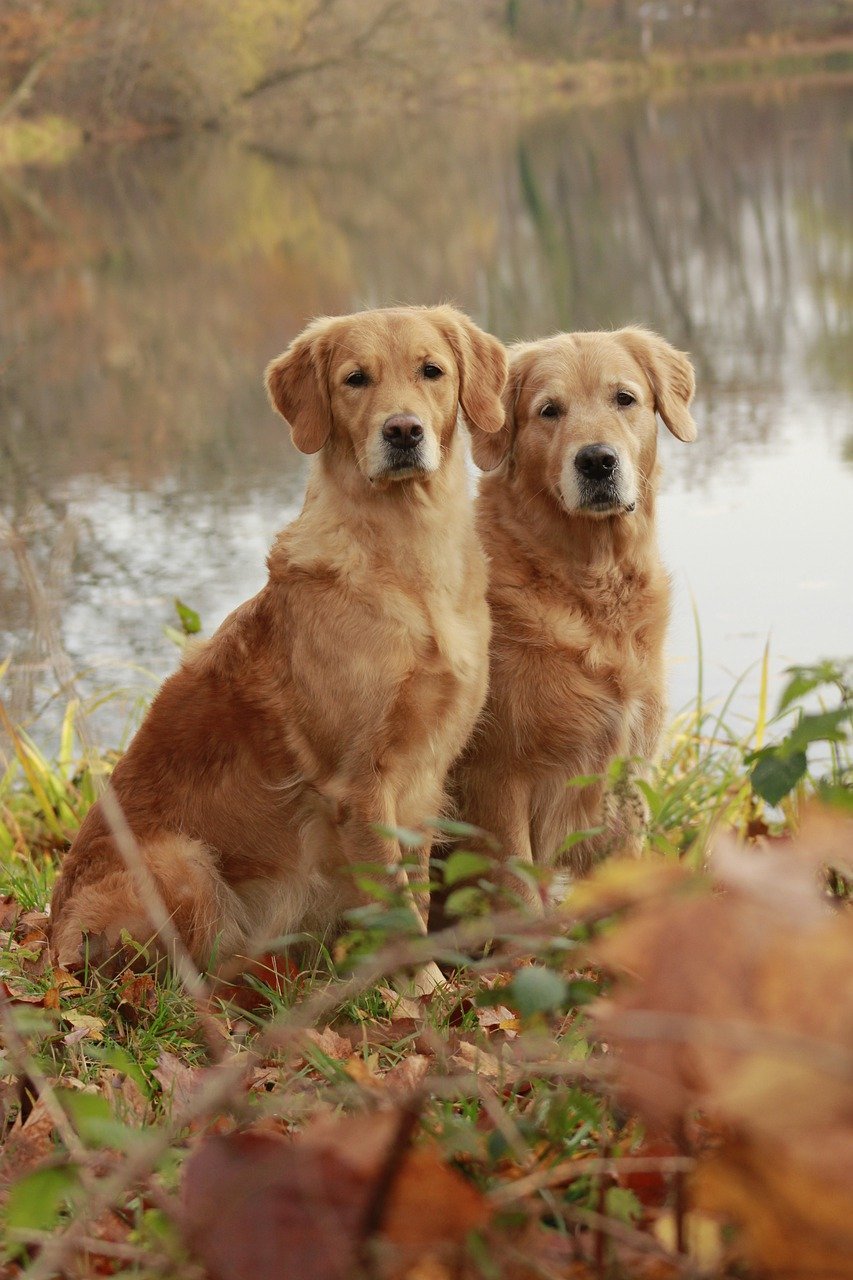If you’re a dog owner, you know how important it is to keep your furry friend calm and happy. However, when it comes to dealing with anxious dogs, sometimes our best intentions can do more harm than good. From soothing an anxious pup with physical touch to disregarding their need for space, it’s essential to be aware of the common mistakes that can escalate their anxiety instead of calming it. By understanding and avoiding these pitfalls, you can provide the support your anxious dog needs and create a peaceful environment for both of you.
Using Punishment as a Calming Technique
Understanding that punishment can increase anxiety
One common mistake dog owners make when trying to calm an anxious dog is resorting to punishment as a calming technique. While it may seem like a quick fix to correct unwanted behavior, punishment can actually increase anxiety in dogs. When a dog is punished, they may associate the punishment with their anxiety triggers, worsening the problem rather than addressing it. Instead of punishing your dog when they are anxious, it’s important to focus on positive reinforcement and creating a safe and supportive environment for them.
Avoiding physical punishments
Physical punishments should always be avoided when trying to calm an anxious dog. Physical punishment can lead to fear, aggression, and a breakdown of trust between you and your pet. Hitting, yelling, or any form of physical aggression will not only fail to calm your dog but can also worsen their anxiety and potentially lead to other behavioral issues. It’s important to remember that dogs respond much better to positive reinforcement and rewards when it comes to shaping their behavior.
Avoiding yelling or harsh words
In addition to physical punishments, yelling or using harsh words with your anxious dog is another mistake to avoid. Dogs are very sensitive to the tone of our voice and yelling can be frightening and increase anxiety levels. Instead of using harsh words or a raised voice, it’s best to speak to your dog in a calm and soothing tone. This will help them feel safe and reassured, rather than adding to their anxiety. Remember, positive reinforcement and gentle encouragement are key when trying to calm an anxious dog.
Neglecting Exercise and Mental Stimulation
Recognizing the importance of physical exercise
Another mistake dog owners often make when trying to calm an anxious dog is neglecting their exercise needs. Regular physical exercise is essential for a dog’s overall well-being and can significantly reduce their anxiety levels. Exercise not only helps to tire them out physically but also releases endorphins, the body’s natural mood-boosting hormones. By providing your dog with regular exercise, such as daily walks or playtime in a securely fenced yard, you can help them burn off excess energy, reduce anxiety, and promote a sense of calmness.
Providing mental stimulation through puzzle toys
In addition to physical exercise, mental stimulation is equally important for calming an anxious dog. Dogs are intelligent creatures that thrive on mental challenges. Providing your dog with puzzle toys or interactive games can help redirect their anxious energy and keep their minds occupied. These toys often require problem-solving and reward your dog for their efforts. Mental stimulation through puzzle toys not only helps to tire them out mentally but also provides a positive and engaging outlet for their anxious behavior.
Enrichment activities to reduce anxiety
Enrichment activities are also effective in reducing anxiety in dogs. These activities can include scent work, agility training, or even hiding treats around the house for them to find. By engaging your dog in activities that tap into their natural instincts and provide a sense of accomplishment, you can help alleviate their anxiety. Enrichment activities can be tailored to your dog’s preferences and capabilities, ensuring that they are both mentally stimulated and calmer as a result.
Lack of Consistent Routine
Establishing a regular schedule
A lack of consistent routine can contribute to anxiety in dogs. Dogs thrive on predictability and structure, and a haphazard schedule may leave them feeling unsettled and anxious. It’s important to establish a regular schedule for feeding, exercise, and rest. This includes consistent meal times, regular walks or play sessions, and designated quiet times for relaxation. By setting a routine, you provide a sense of security and familiarity for your dog, helping them to feel calmer and more at ease.
Maintaining consistency in feeding and exercise
Consistency in feeding and exercise routines is vital for calming an anxious dog. Regular meal times and portion control ensure that your dog’s nutritional needs are met and prevent unnecessary fluctuations in blood sugar levels, which can contribute to anxiety. Similarly, maintaining consistency in exercise helps regulate your dog’s energy levels and promotes a healthier state of mind. By sticking to a consistent schedule, you establish a sense of stability and predictability that can help reduce anxiety in your dog.
Creating a safe and predictable environment
In addition to establishing a regular routine, creating a safe and predictable environment is crucial for calming an anxious dog. Dogs are sensitive to changes in their surroundings, and unexpected changes can trigger or exacerbate their anxiety. Ensure that your dog has a designated space that they can retreat to when they’re feeling stressed, such as a crate or a cozy corner with their favorite bed. Minimize sudden changes in the household, such as rearranging furniture, bringing home new pets, or hosting loud gatherings, as these can all contribute to heightened anxiety in your dog. By providing a stable and secure environment, you can help your dog feel more calm and secure in their surroundings.
Not Recognizing Signs of Anxiety
Understanding common anxiety symptoms in dogs
One common mistake that dog owners make when trying to calm an anxious dog is not recognizing the signs of anxiety. Dogs communicate their emotions in various ways, and it’s important to familiarize yourself with the common symptoms of anxiety. These can include excessive barking, pacing, restlessness, panting, trembling, drooling, dilated pupils, destructive behavior, and attempting to escape. By understanding these signs, you can intervene early and implement strategies to help calm your dog.
Recognizing body language cues
Aside from specific symptoms, dogs also display anxiety through their body language. It’s important to recognize these cues to better understand your dog’s emotional state. Some common body language cues of anxiety in dogs include tucked tail, lowered ears, avoidance of eye contact, raised hackles, lip licking, yawning, and excessive shedding. By paying attention to your dog’s body language, you can better gauge their level of anxiety and respond appropriately, whether it’s providing comfort or removing them from a stressful situation.
Seeking professional help when needed
If you find that despite your best efforts, your dog’s anxiety persists or worsens, it may be time to seek professional help. An animal behaviorist or veterinarian experienced in anxiety management can provide valuable guidance and develop a personalized plan for your dog. They will be able to identify underlying causes of anxiety, offer behavior modification techniques, and, if necessary, recommend medication to help alleviate your dog’s anxiety. Remember, there’s no shame in seeking professional help, as it shows your commitment to your dog’s well-being and ensuring a happier, calmer life for them.

This image is property of pixabay.com.
Overwhelming Environment
Reducing exposure to loud noises
An overwhelming environment can contribute significantly to a dog’s anxiety. Loud noises, such as fireworks, thunderstorms, or even crowded gatherings, can trigger intense fear and anxiety in dogs. It’s important to identify the specific triggers for your dog and take steps to reduce their exposure. For example, during a thunderstorm, create a safe space for your dog away from windows and provide them with calming music or white noise to drown out the sound. By reducing their exposure to overwhelming stimuli, you can help minimize their anxiety levels.
Creating a calm and quiet space
In addition to reducing exposure to loud noises, creating a calm and quiet space for your dog is essential for their well-being. This space should be somewhere they can retreat to when they feel overwhelmed or anxious. Provide comfortable bedding, a favorite toy, and access to fresh water in this area. Consider using techniques such as aromatherapy or calming pheromone diffusers to help create a soothing environment. By designating a calm space for your dog, you offer them a safe haven where they can relax and find comfort.
Avoiding crowded places
Crowded places can be overwhelming for dogs, especially those prone to anxiety. Avoiding crowded places, such as busy parks or bustling city centers, can help reduce your dog’s exposure to stress-inducing situations. If you need to take your dog out in public, choose quieter times or find less crowded areas where they can have space to relax. By avoiding crowded places, you minimize the chances of your dog becoming overwhelmed and anxious, contributing to a calmer and more relaxed state of mind.
Avoiding Positive Reinforcement
Using treats and rewards to reinforce calm behavior
Positive reinforcement is a powerful tool for calming an anxious dog. Using treats and rewards to reinforce calm behavior helps to associate positive experiences with relaxation. When your dog displays calm behavior, such as lying down quietly or approaching a trigger without showing signs of anxiety, reward them with treats, praise, or playtime. By consistently rewarding calm behavior, you reinforce the desired response and help your dog learn to associate relaxation with positive outcomes.
Implementing clicker training or target training
Clicker training or target training can be effective techniques for calming an anxious dog. These methods involve using a clicker or a target stick to mark and reward desired behaviors. Clicker training allows you to communicate with your dog more effectively by using a distinct sound that signals when they’ve done something right. Target training involves teaching your dog to touch a specific object, such as your hand or a target stick, for a reward. Both of these training methods help to redirect your dog’s focus, reinforce calm behavior, and create positive associations.
Ignoring unwanted behavior instead of punishing
Instead of punishing unwanted behavior, it’s important to ignore it and focus on reinforcing calm behavior. Punishment can inadvertently reinforce anxious behavior by giving attention to undesirable actions. Ignoring unwanted behavior, such as excessive barking or jumping, helps to prevent reinforcement and encourages your dog to find alternative, more relaxed behaviors. By redirecting their attention to calm and desirable behaviors and reinforcing those instead, you can effectively calm an anxious dog without resorting to punishment.

This image is property of pixabay.com.
Neglecting Proper Socialization
Gradually exposing the dog to new experiences
Proper socialization is crucial for an anxious dog, yet it is a common mistake to neglect this aspect. Gradually exposing your dog to new experiences, environments, people, and animals in a controlled and positive manner can help reduce anxiety and build confidence. Start by introducing your dog to new experiences gradually and at their own pace. Use treats and praise to reward calm behavior and provide a sense of security during socialization. Remember to be patient and understanding, as it may take time for your dog to feel comfortable in new situations.
Positive interactions with other dogs and people
Positive interactions with other dogs and people are essential for socializing an anxious dog. However, it’s important to ensure that these interactions are positive and well-controlled. Encourage calm greetings and interactions with well-behaved dogs and people who understand and respect your dog’s anxiety. Use treats and rewards to reinforce positive interactions and help your dog associate socialization with positive experiences. By gradually exposing them to positive interactions, you can help reduce their anxiety and build their social confidence.
Avoiding forceful or negative social interactions
Forceful or negative social interactions should always be avoided when socializing an anxious dog. Forcing your dog into uncomfortable situations or exposing them to negative experiences can heighten their anxiety and worsen their behavior. It’s important to prioritize your dog’s emotional well-being and understand their individual limits. Take things at their pace, ensuring that they feel safe and secure throughout the socialization process. By avoiding forceful or negative social interactions, you can help build your dog’s confidence and create positive associations with socialization.
Using Inappropriate Calming Aids
Avoiding medications without veterinary guidance
When it comes to calming aids, it’s important to avoid giving any medications to your dog without veterinary guidance. While certain medications can help manage anxiety in dogs, they should only be prescribed and administered by a veterinarian. Never give your dog any medications intended for humans without professional advice, as they can have adverse effects and may not be safe for your pet. Always consult with your veterinarian to discuss the appropriate options for managing your dog’s anxiety.
Using natural calming products cautiously
Natural calming products, such as herbal supplements or essential oils, can be used cautiously to help reduce anxiety in dogs. However, it’s essential to consult with your veterinarian before using these products, as they may not be suitable or safe for your dog based on their individual health conditions or sensitivities. Even natural products can have side effects or interactions, so it’s crucial to seek professional guidance before incorporating them into your dog’s anxiety management plan.
Seeking professional advice for anxiety management
If your dog’s anxiety is severe or persistent, it’s important to seek professional advice for anxiety management. A veterinarian or animal behaviorist can assess your dog’s specific needs and develop a comprehensive plan for managing their anxiety. This may involve a combination of behavioral modification techniques, medication, and other professional interventions. By working closely with professionals, you can ensure that your dog receives the appropriate support and treatments necessary to address their anxiety effectively.

Not Creating a Safe Space
Providing a designated and secure area for the dog
Not creating a safe space for your anxious dog is a common mistake that can impact their overall well-being. Dogs need a designated and secure area where they can retreat to when they feel anxious or overwhelmed. This area can be a crate, a specific room, or a cozy corner of your home. Ensure that this space is comfortable, quiet, and free from potential anxiety triggers. Make it a positive and inviting space by providing soft bedding, familiar scents, and toys. By having a safe space, your dog will have a place to relax and feel secure during anxiety-inducing situations.
Creating a cozy and comfortable environment
In addition to a designated safe space, creating a cozy and comfortable environment throughout your home is crucial for calming an anxious dog. Provide soft bedding, blankets, and pillows for your dog to rest on. Consider using products such as thundershirts or weighted blankets, which can provide a gentle, comforting pressure that helps reduce anxiety in some dogs. Additionally, make sure the temperature in your home is comfortable for your dog and that they have access to fresh water. By creating a cozy environment, you can help your dog feel more relaxed and at ease.
Using thundershirts or weighted blankets if helpful
Thundershirts or weighted blankets can be beneficial for some anxious dogs. Thundershirts are specially designed dog vests that wrap snugly around their bodies, providing a gentle compression that can help reduce anxiety. Weighted blankets work similarly, offering a comforting and calming pressure. These products simulate the feeling of being held or swaddled, which can ease anxiety in many dogs. However, it’s important to introduce these items gradually and monitor your dog’s reaction to ensure they are comfortable and not distressed. Not all dogs will respond positively to thundershirts or weighted blankets, so it’s essential to consider your dog’s individual needs and preferences.
Neglecting Professional Help
Recognizing when professional intervention is necessary
Neglecting professional help is a mistake that can inhibit your dog’s progress in managing their anxiety. Recognizing when professional intervention is necessary is crucial for their overall well-being. If your dog’s anxiety is severe, persistent, or interferes with their quality of life, it’s time to seek professional help. Signs that professional intervention may be necessary include continuous destructive behavior, aggression, self-harm, or extreme withdrawal. Don’t hesitate to reach out to a veterinarian or certified animal behaviorist to discuss your concerns and explore appropriate treatment options for your dog.
Consulting with a veterinarian or animal behaviorist
When seeking professional help for your anxious dog, consulting with a veterinarian or animal behaviorist is highly recommended. A veterinarian can assess your dog’s overall health, rule out any underlying medical conditions that may contribute to their anxiety, and prescribe appropriate medications if necessary. An animal behaviorist specializes in the behavior and psychology of animals and can provide guidance on behavior modification techniques and create a tailored anxiety management plan for your dog. By working with professionals, you can access the expertise needed to address your dog’s anxiety effectively.
Exploring therapy options for anxiety management
In some cases, therapy options may be recommended to help manage your dog’s anxiety. These can include options such as desensitization and counterconditioning, cognitive-behavioral therapy, or acupuncture. Desensitization and counterconditioning involve gradually exposing your dog to their anxiety triggers in a controlled and positive manner, helping them develop a more positive association. Cognitive-behavioral therapy focuses on changing negative thought patterns and responses in your dog to promote emotional well-being. Acupuncture can help promote relaxation and reduce anxiety in some dogs. Depending on your dog’s specific needs, a professional can recommend the most appropriate therapy options to address their anxiety effectively.
In conclusion, it’s essential to avoid common mistakes when trying to calm an anxious dog. By understanding that punishment can increase anxiety, avoiding physical punishments and harsh words, prioritizing exercise and mental stimulation, establishing a consistent routine, recognizing signs of anxiety, creating a safe and predictable environment, using positive reinforcement, providing proper socialization, using appropriate calming aids cautiously, creating a safe space, and seeking professional help when needed, you can effectively calm an anxious dog and create a happier, more peaceful life for both you and your beloved pet. Remember, patience, understanding, and positive reinforcement are key to helping your anxious dog thrive.


